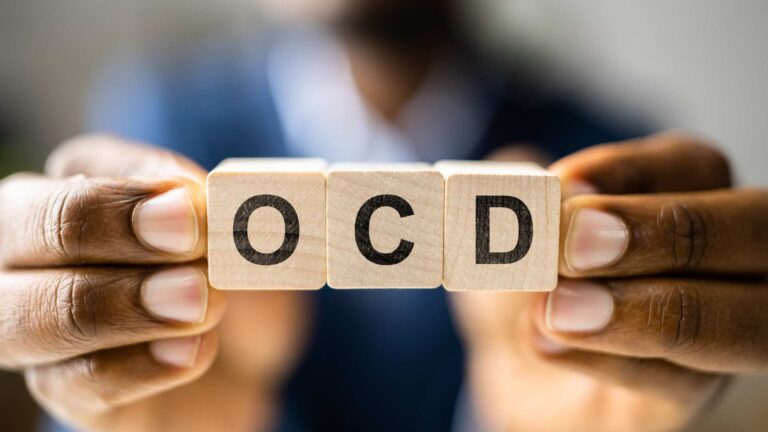Table of Contents
How long should a child stay in ABA therapy?
When you’re a parent or caregiver of a child with autism, it’s natural to want to explore every option available to help them grow, learn, and develop independence. There are countless therapeutic approaches out there, but one that stands out for its effectiveness is Applied Behavior Analysis (ABA). This behavioral therapy focuses on encouraging positive behaviors while reducing challenging ones. But as you dive into the world of ABA, one question inevitably comes to mind: What’s the duration of ABA therapy?
The answer is complex because it depends on various factors. Every child with autism is unique, meaning their needs, challenges, and progress will differ from others. Some children may struggle with social interactions, while others might have learning delays or communication issues. Others may face entirely different behavioral challenges. That’s why ABA therapy is highly individualized, and its duration can vary.
In this blog by ABA Centers of Georgia, we’ll explore the different factors that influence the duration of ABA therapy, what parents should expect, and how to make the most of the therapy process to support your child’s development.
ABA Therapy Approach

Before we delve into the factors related to the duration of ABA therapy, let’s first grasp the ABA method and its sessions. ABA is a behavior-based therapy that focuses on identifying and changing problem behaviors and promoting positive social and communication skills. This therapy is based on the fact that individuals learn behaviors and can modify them through specific techniques.
ABA sessions generally last 20 to 40 hours per week, depending on the child’s individual needs. Depending on the program, these sessions can take place in clinical settings, in the child’s home, or family settings such as schools, shopping malls, etc. During each session, a trained therapist will work with the child to set goals and use specific techniques to promote desired behaviors and decrease challenging ones.
ABA techniques include modeling, task analysis, positive reinforcement, reward systems, feedback, and skill generalization. These techniques apply scientific principles that have proven effective in modifying human behavior.
Factors Influencing ABA Therapy Duration
ABA therapy doesn’t follow a one-size-fits-all timeline. The length of treatment depends on several key factors, which include:
1. Individual Needs and Goals
Therapists plan each child’s therapy around their specific needs and goals. For example, a child who primarily struggles with social interactions may require a different approach than one who needs to develop better communication skills. The severity of the child’s challenges will play a significant role in determining the duration of therapy.
2. Intensity of Therapy
ABA therapy can be delivered in varying intensities, from a few hours per week to full-day, full-week programs. For children with more severe challenges, clinicians recommend intensive therapy (often 20-40 hours per week). In these cases, treatment may last for several years, although the exact length will vary depending on progress.
Moreover, Translational Psychiatry explored how the intensity and duration of ABA therapy impact learning in children with autism across different skill areas, including academic, adaptive, cognitive, executive function, language, motor, play, and social skills. Researchers analyzed data from 1,468 children aged 18 months to 12 years and found that both treatment intensity and duration significantly influenced progress in all eight skill areas.

Language and academic skills showed the most substantial improvements with more intense and longer therapy.
3. Early Intervention
Starting ABA therapy at a young age is associated with better outcomes, as early intervention has a significant impact on a child’s developmental trajectory. According to NICHD, children who begin therapy around three years old typically respond faster to treatment due to their brain’s plasticity, allowing them to adapt and learn new behaviors more efficiently.
Early intervention can sometimes result in needing less therapy overall compared to children who start at a later age when certain behaviors may be more ingrained.
4. Progress Over Time
Progress is another critical factor in determining the length of therapy. Some children show rapid improvement in specific areas and may need less time in treatment, while others might progress more slowly and require a longer duration to meet their goals. ABA therapy is flexible and evolves as the child grows and learns, so the timeline is always adjustable based on their progress.
5. Parental Involvement
When parents actively participate in reinforcing the skills learned in therapy at home and, overall, in any setting, it can accelerate the child’s progress. Families that can integrate therapy into daily routines may find that treatment ends sooner, as the child may achieve their goals faster.
How ABA Therapists Track Client Progress
ABA therapists use systematic, data-driven methods to ensure each client’s progress is measurable and effective. By employing a combination of observation, data collection, and assessment tools, BCBAs, and RBTs adjust and refine the treatment to best meet the client’s evolving needs.
Direct Observation: ABA therapists observe the client’s behavior in different environments, noting how they respond to stimuli. This real-time feedback is crucial for shaping strategies that address specific behaviors.
Data Collection: Therapists consistently track progress with defined metrics, monitoring how well a client acquires new skills or reduces challenging behaviors. This data-driven approach allows for timely adjustments to the therapy plan, ensuring ongoing development.
Assessment Tools: Therapists use formal tools to assess critical areas of growth, identify strengths, and focus on areas that need further development. This targeted approach ensures that interventions are effective and meaningful.
The Importance of Consistency in ABA Therapy Duration
When discussing the duration of ABA therapy, it’s important to remember that consistency plays a crucial role in determining how long treatment will last and how effective it will be. While every child progresses at their own pace, sticking to the therapy schedule ensures that the skills clients are developing therapist can reinforce over time. Breaks in therapy, whether due to scheduling conflicts, financial challenges, or unexpected life events, can disrupt this progress, potentially prolonging the overall duration of treatment.
ABA therapy relies heavily on repetition and consistency to help children with autism learn and generalize positive behaviors. Skipping sessions or pausing therapy may not only slow progress but can also result in the loss of previously acquired skills, meaning kids will need more time to regain and reinforce them.
The Role of ABA Therapy in Long-Term Development

ABA therapy is not just about addressing immediate challenges—it’s about setting your child up for long-term success. The skills they learn during treatment can have a lasting impact on their ability to navigate the world, build relationships, and achieve greater independence. The duration of the program might feel overwhelming at first, but it’s important to remember that it’s an investment in your child’s future.
Supporting Your Child’s Journey with ABA Centers of Georgia
At ABA Centers of Georgia, we understand that starting ABA therapy can feel like a big commitment, especially when you’re unsure how long it will take. But no matter the duration, ABA therapy is one of the most effective tools available for helping children with autism develop crucial life skills. The goal isn’t just to help them get through today—it’s to prepare them for tomorrow and beyond.
If you’re wondering whether ABA therapy is suitable for your child or have questions about how long it might last, reach out to us, call us at (855) 929-5058, or contact us online. We also have a presence in Alpharetta, Atlanta, Buckhead, Marietta, and other areas of Georgia and provide in-home therapy because we go where you go!
We’re here to guide you through every step of the process and ensure your child gets the support they need to thrive.









